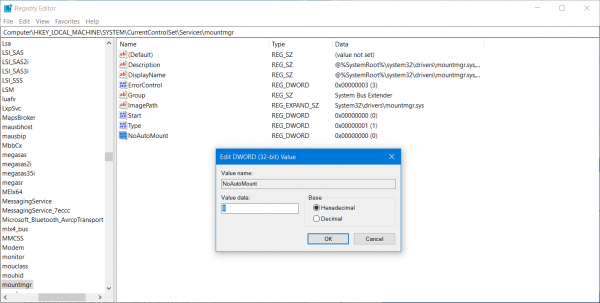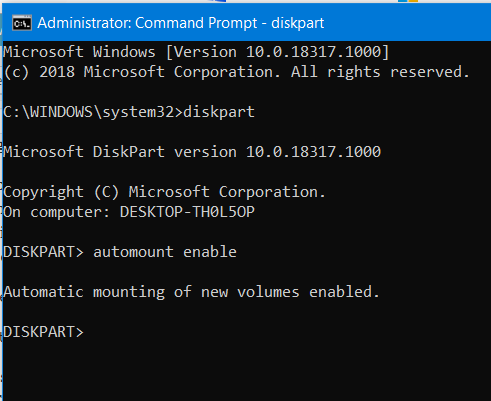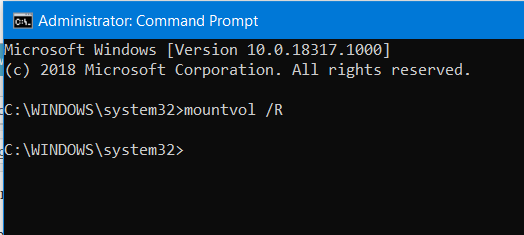Whenever a new drive or any storage device is attached to a Windows 10 computer, the Operating System tends to automatically allot a drive letter to it. This is not limited to assigning just a letter, but the OS also maps the location of the drive. This helps it in pointing the letter to the exact port location of the drive and serving requests from the user. This builds up a small chunk of cache as per the pattern in which the user tends to use the computer storage. This whole process is referred to as Auto Mounting. It works for Hard Disks or Optical Drive readers connected using the SATA Ports as well as for USB Drives connected using the USB Ports perfectly.
Enable or Disable Auto-Mount feature in Windows 11/10
We will be taking a look at three methods that will show us how to enable or disable Drives’ Auto Mounting:
- Using the Registry Editor.
- Using the DiskPart Utility.
- Using the MountVol tool.
I recommend that you create a System Restore Point. This is because if something goes wrong, you can always revert.
1] Using the Registry Editor

Hit the WINKEY + R button combination to launch the Run utility, type in regedit and hit Enter. Once Registry Editor opens, navigate to the following key-
Computer\HKEY_LOCAL_MACHINE\SYSTEM\CurrentControlSet\Services\mountmgr
Now, check if you find a DWORD named as NoAutoMount. If you don’t, just create one with the same name. Make sure that the base is selected to Hexadecimal.
Double-click on it and change its Value to 0 to enable it and, to 1 to disable it.
Reboot your computer for the changes to take effect.
2] Using the DiskPart utility

Run Command Prompt as Administrator and execute the following command:
diskpart
This will start the DiskPart Utility. It is a command line based utility and will get a UAC Prompt once you invoke it. You have to click on Yes for the UAC Prompt. Then, type in-
automount
This will show output either – Automatic mounting of new volumes enabled or Automatic mounting of new volumes disabled.
This means it can be used to check the status of Auto Mount.
Another command which can be helpful is-
automount enable
It can be used to enable the Auto Mount feature.
This command can help you to disable the Auto Mount feature-
automount disable
The following command will help you to remove all the assigned letters and history of drives previously connected-
automount scrub
3] Using MountVol tool

Here, we will be taking a look at the mountvol command.
Run Command Prompt as Administrator and execute the following command:
mountvol /E
It will enable the Auto Mount feature.
This command will help you in disabling the Auto Mount feature-
mountvol /N
The following command will help you to remove all the previously assigned drive letters-
mountvol /R
You need to reboot your computer for the changes to take effect.
Do note that you have to be signed in as an administrator to enable or disable the automount feature.
Now read: How to enable or disable USB Drives or Ports in Windows 11/10.
Leave a Reply